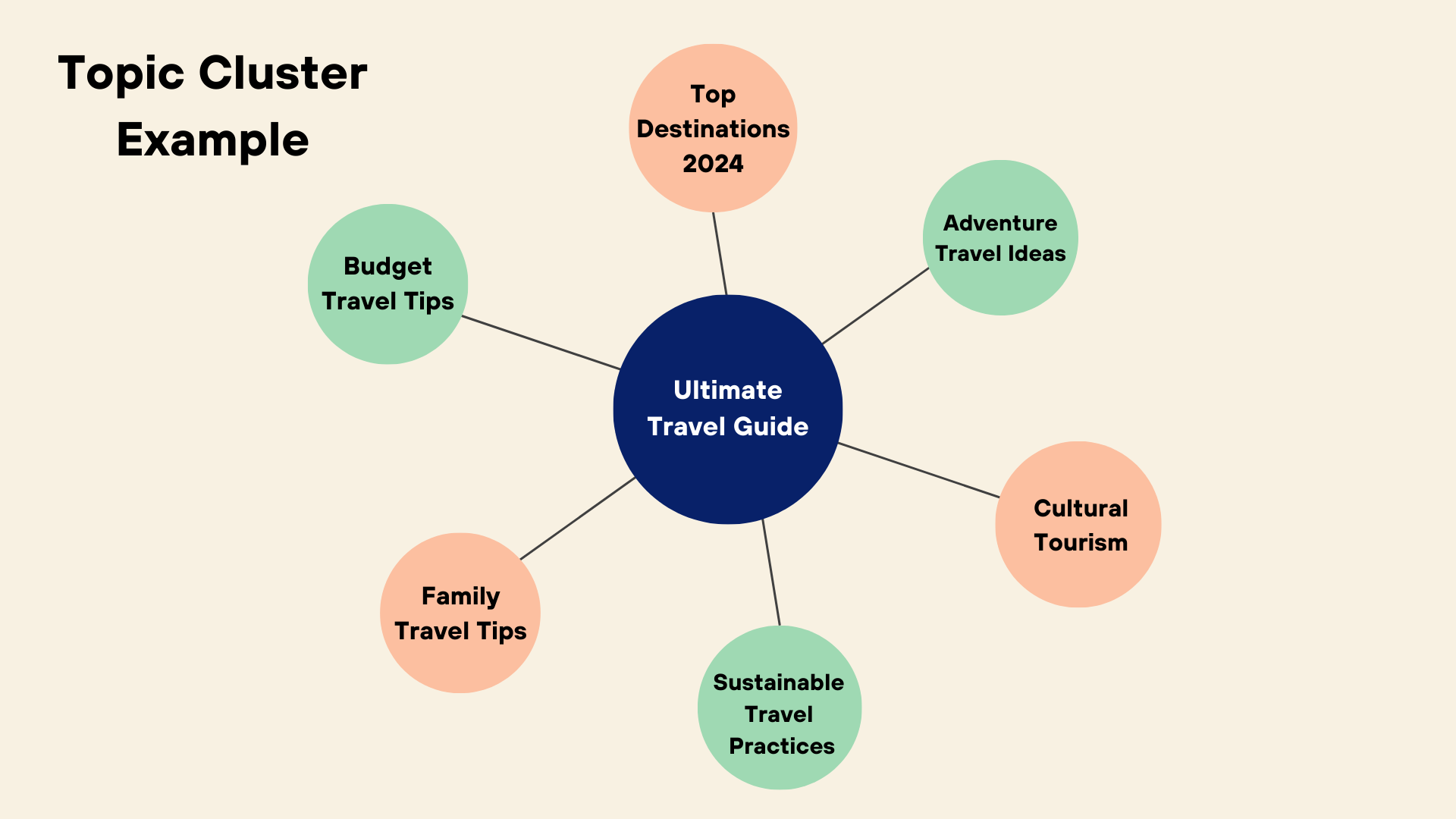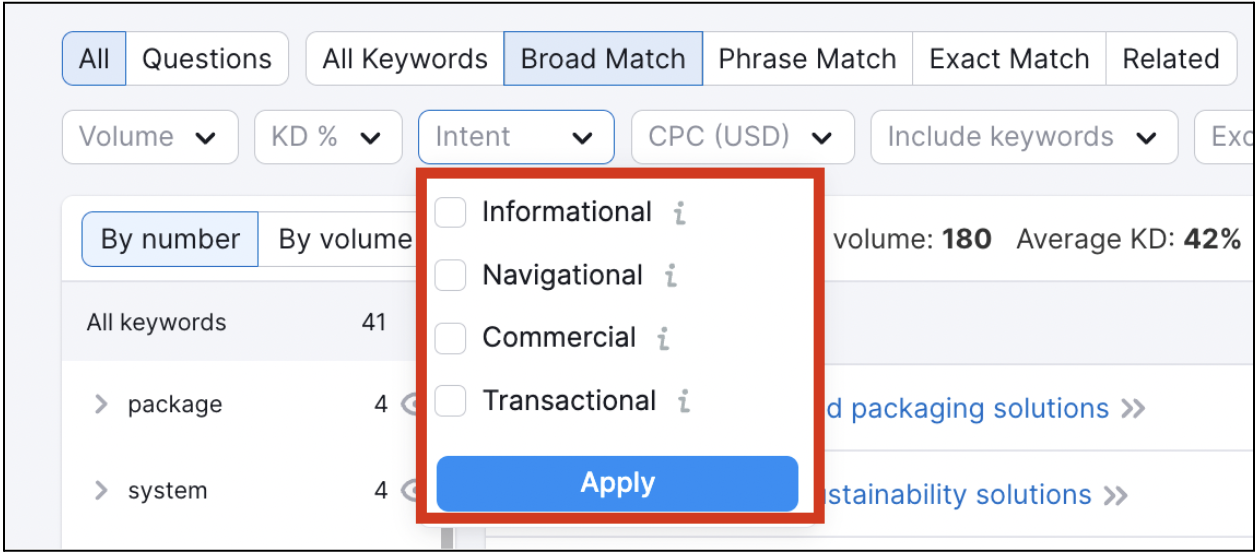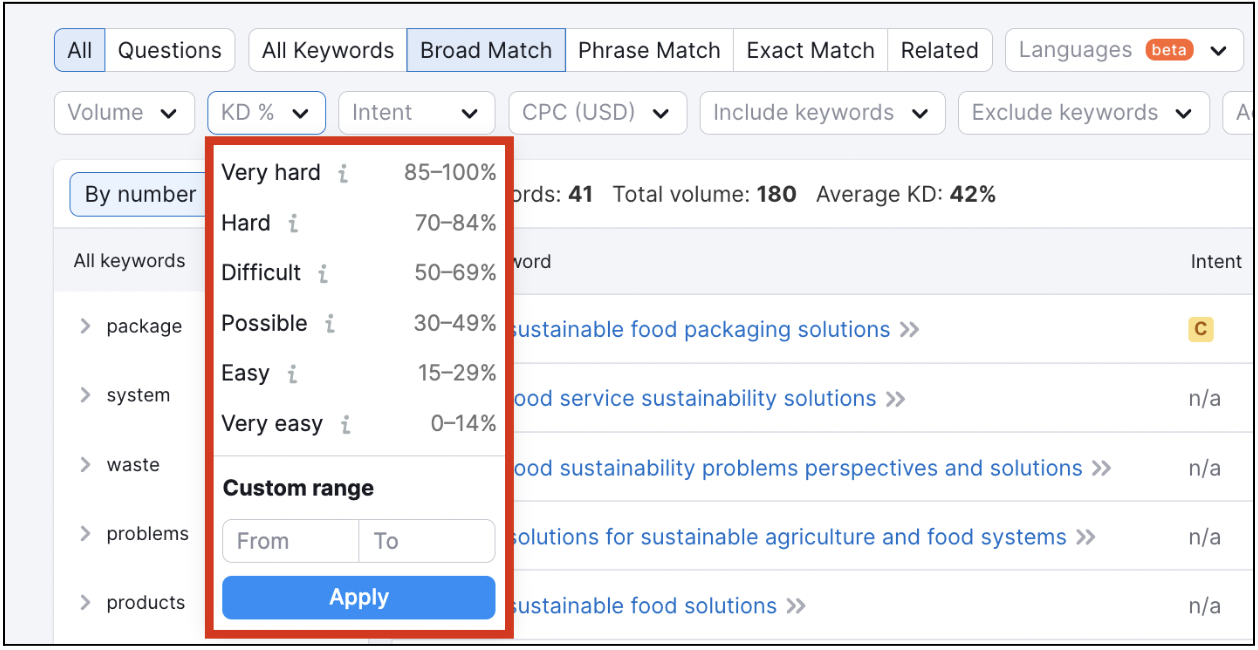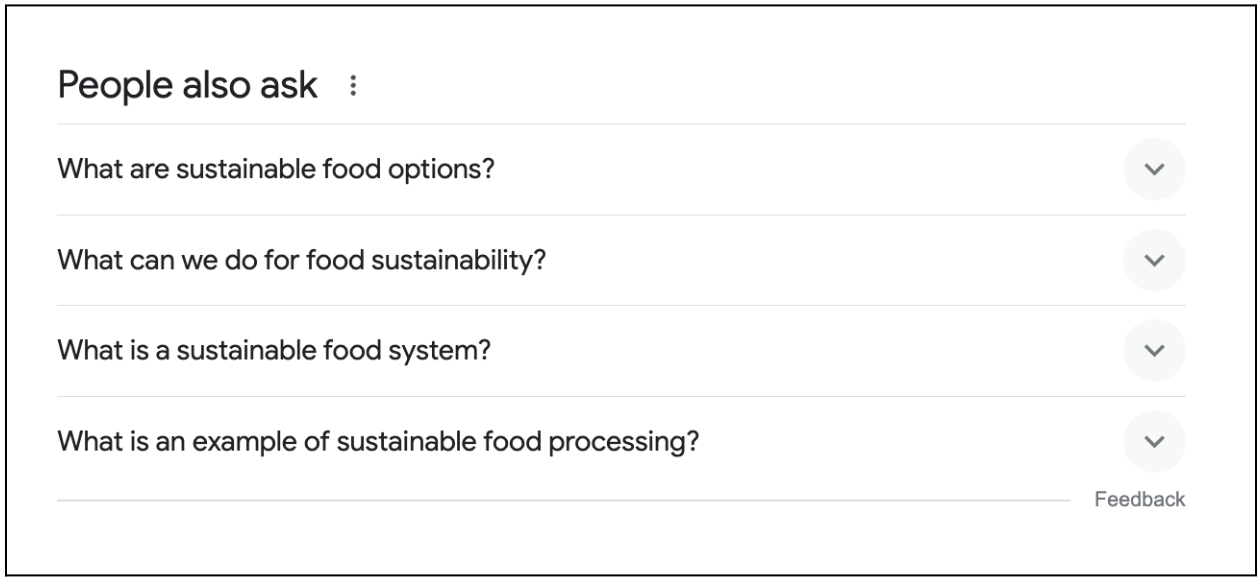If you fall under any of the following criteria…
-
You’re a non-profit or social impact organization
-
You’re writing blogs for your website
-
Your audience isn’t seeing your blog content
Then you’re certainly not alone.
As an agency who operates in the social impact space, we see many organizations struggle to create blogs that actually get favoured by Google. No matter how much content they write, their audience just isn’t seeing it.
But good SEO is a key principle of a successful website and reaching your audience via Google isn’t as tricky as you think. Once you have your on-page fundamentals down pat, you just need to know what your audience wants, what Google wants, and how to balance those two needs.
Every blog process follows a similar format: content ideation, execution, and analysis. From keyword research to optimization, here’s a step-by-step guide to reach your audience through blog content.
Before You Write: Keyword research tips for nonprofits
Map out your content.
Ironically, one of the best keyword research tips is mapping out your content beyond single keywords. Instead, focus on topic clusters.
Topic clusters are groups of subtopics organized around a core topic. They help you demonstrate your expertise on the subjects you want to be known for, such as your goals, mission, and purpose. As a result, organizing your content in “clusters” helps signal to Google that you are, in fact, a trusted source on the matter.
Here’s an image to help you visualize it.

But instead of a travel guide, let’s say you’re a wildlife organization in Vancouver. Here’s how one of your topic clusters might look:
- Topic:
- Endangered species in B.C.
- Subtopics:
-
- Endangered fish species in B.C.
- Endangered mammals in B.C.
- Endangered birds in B.C.
And the list goes on. Once you identify a few core clusters, you can then list out some subtopics. When you sit down to write, alternate between each high-level topic to cover your bases.
With a topic cluster approach—rather than a keyword approach—you’re signaling to Google that you’re an expert in your field.
This allows for a higher chance of Google showing your blogs to the ones who need to see it, i.e., your target audience.
Look at search intent.
Once you’ve decided what you’re writing about, think about what your audience is searching for and why. In the content industry, this is known as search intent.
Ultimately, search intent is the desired end goal of a user’s search—it’s why they went to Google in the first place. They want to easily find the answer they’re looking for, and they want to ensure that the blog they read answers their exact query.
To identify a user’s search intent, use a keyword research tool such as Semrush, Ahrefs, or Moz. Once in the tool, you’ll notice four main classifications like the image below.

Each one differs depending on the tool, but they all ultimately boil down to:
- Informational – The user’s intent is to learn something. Example: how does affordable housing address racial inequity
- Navigational – The user’s intent is to go somewhere specific. Example: David Suzuki Foundation
- Commercial or Investigational – The user’s intent is to learn more about a topic in order to ultimately do something. Example: Top charities to support in Toronto
- Transactional – The user’s intent is to do or buy something specific. Example: donate to cancer research
Depending on what a user is typing in the search bar, the content shown in Google’s results will look very different. That’s why it’s important to know the search intent behind any keyword. You can then strategically create content that lines up with exactly what they’re looking for.
Go beyond search volume.
Many moons ago, an SEO strategy involved looking at a keyword’s volume and trying to rank for it. The more popular the keyword, the more reason to write about it, right?
Not so much.
Today, that strategy is wildly ineffective—especially for smaller social impact organizations. If you’re trying to target “food solutions,” you’re going to have a tough time. Organizations have to be more specific than that. Instead, focus on long-tail keywords with easier keyword difficulty (more on that below).
For example, choose a keyword such as “sustainable food solutions in western Africa.”
While you may reach a smaller audience, it’ll be a much more targeted and engaged one. If you employ this strategy at a higher volume (i.e., many blogs with targeted search intent), you’ll build up authority with Google.
Aim for “possible” keywords.
Let’s elaborate on the keyword difficulty note above.
Once you’re in your keyword research tool, you can zoom in on how easy or hard a keyword is to rank for. In Semrush, this is known as a Keyword Difficulty score (KD%), but this term may differ for each company.

As you can see, the scores range from “very easy to “very hard.” Opting for a “very hard” keyword with a score of 99% is bold. It may only be possible for the Red Crosses of the world.
To ensure your audience sees your content, aim for a keyword difficulty score of less than 50%—especially if you’re a smaller organization. Doing so gives you a much better chance of reaching your audience.
And if you’re new to blogging, we recommend focusing on keywords within the “very easy” to the “easy” range. “Possible” keywords might be more in reach for a bigger organization with a strong web presence.
If you write blogs targeting long-tail keywords with easier keyword difficulty scores, your audience will see them. Eventually, Google will start to trust you, and you can start to target more difficult keywords.
Use manual search.
Using keyword research tools like Semrush is certainly helpful. But honestly, these tools aren’t 100% critical—nor are they entirely accurate, either.
One of the best things about blog content is that it’s accessible. You don’t need to spend thousands on ads for your audience to find you. Organizations of all sizes and budgets can leverage free, organic search with a strategic approach.
And that means you can use search engines themselves for keyword ideas. Just head on over to your search engine, type in your idea, and see what pops up. Google’s “People Also Ask” section is a goldmine for keyword ideas.
Choose your keyword and voila! It’s time to write.

With these keyword research tips, you can establish a solid authority for your website’s search presence. But that’s the first piece of the puzzle. The next step is to write the content itself, and there is a whole swath of best practices for brands to follow.
Here are some tactical best practices for actually writing your blog content. Here’s how to write your blogs in a way that Google likes.
As You Write: How to create better blog content
Match your content to search intent.
As mentioned earlier, understanding search intent is crucial. Remember: a single search can tell you a surprising amount about what your audience wants. Once you identify what the search intent is, match your blog to it.
For example, we can pull a lot of valuable information from someone’s search: “sustainable food sourcing solutions in Africa.” Explicitly, we know that this user is searching for informational content on sustainable food sourcing in a specific region.
Implicitly, we can infer that this user has an advanced understanding of the issue. “Food sourcing solutions” itself isn’t everyday language. They’re also using “solutions” (not “best solution”), suggesting that they have the bases covered.
So what does this tell us? Based on the search alone, they don’t want a high-level introduction to what food sourcing solutions are. (Although this can be something you touch on in the blog.) Instead, they want to learn about a variety of solutions, and they likely want you to drill down into the topic.
Therefore, for this particular keyword, the search intent may be both “Navigational” and “Informational.”
Consider writing an informative analysis of multiple organizations offering sustainable food solutions across Africa.
Structure your content based on your audience’s questions.
So, building off of the query above, let’s say we want to write a technical analysis. In our blog, we want our audience to feel fulfilled by our content, and that means answering a variety of questions they might have.
Consider pulling information from the People Also Ask section for this. Some questions we could use for this particular example might be:
- What to look for in sustainable food sourcing solutions
- What to avoid when choosing a sustainable food sourcing solution
- The top organizations offering food sourcing solutions across africa
Optimize your blog by using these keywords (or phrases) as H2 and H3 headers throughout your content, guiding the reader to their exact answer. When searchers see their questions repeated back to them, they are more likely to trust that you are the resource that they need.
Ultimately, use keywords as a tool to build out the content that your target audience is searching for. By doing this, Google will start seeing you as a valuable resource for your core topics and you build trust with your audience.
Start writing, and make sure it sounds like you.
Now it’s time to write. But write like the real you—both for your audience and for Google.
With the rise of AI-generated content, authentically sounding like your unique self will help you stand apart from the crowd. Not only does this make it easier for you when you’re writing, but this is actually preferable for search engines.
To avoid spammy content, Google’s recent algorithm updates are prioritizing genuinely helpful content. Google wants you to connect with your audience, and speaking to your audience as you is one way to do that.
So, instead of starting a blog with “In today’s evolving world,” a notoriously telltale sign of ChatGPT, write like your brand does. By all means, use AI tools for ideation, inspiration, and support. But add your human touch to ensure Google, and your audience, favours your content.
Want more writing tips? Check out our guidelines on how to write effective web content.
Add unique imagery.
Now that you’re done writing (and editing, of course), add images to break up your content. Incorporating imagery into your blogs helps your website’s search presence and makes the reading experience much more enjoyable for your audience.
With imagery, you can:
- Reach new audiences through image optimization alone (custom images, proper file naming, alt tags, compressed file sizes)
- Make your content more accessible for your audience with alt tags
- Ensure your content is scannable and readable for your audience
- Help explain your points
But adding images doesn’t mean using exclusively stock. Google likes unique imagery. If possible, try to create custom images that accurately represent your brand. If stock is the only option, embellish them with graphics and branding elements—if possible.
Publish.
The next step in your journey is to actually publish your blog.
To help appease Google, optimize your H2 and H3 headers and conduct a final SEO pass on the backend. This means plugging in your target keywords, meta description, slug, etc.
Once everything’s in order, re-read the blog for a final edit, and publish away.
Monitor and analyze.
But wait—you’re not done yet! Many brands think that blogging is a one-and-done practice. But it’s not.
Oftentimes, your published blogs may only need a few tweaks to reach your audience. This may mean adding in images, updating your content, including sources, or adjusting your headers. Whatever it is, make sure you’re consistently analyzing, auditing, and optimizing your blogs—even after you hit publish.
To do so, use tools like Google Analytics 4 (GA4) and Hotjar to see how your audience is interacting with your content. Go beyond vanity metrics like page views. Instead, focus on metrics like engagement rate, click-through rates, engagement time, and key events.
That way, you can get a much clearer picture of what content resonates with your audience and what doesn’t. Search engines are smart—they want you to establish an authentic connection with your audience. If your audience clicks on your blog and then immediately leaves, your content isn’t building that connection.
Final thoughts
Creating content that Google and your audience likes isn’t as tough as it seems—it all comes down to keeping the end user in mind. What would your audience want to hear?
That being said, it can get overwhelming to make sure you’re checking all the boxes off. If you’re looking for additional support for your blog, website, and more, don’t hesitate to reach out.
Want to learn more about SEO for your nonprofit?
Insights
The Fundamentals of Technical SEO
On-page SEO, which looks at how you optimize your website's pages for people, focuses on writing for readability.
Insights
On-page SEO: 5 Simple Ways to Get Your Nonprofit Found on Google
Search engine optimization, better known as SEO, is the practice of optimizing your organization’s website to improve its chances of appearing in search results.
Insights
Beyond Keywords: How SEO is Continuing to Evolve
Since the beginning of search engine optimization, keywords have been at the center of any content strategy. But with the increasing complexity of SEO, the ability to rank high on Google now expands well beyond keywords.


